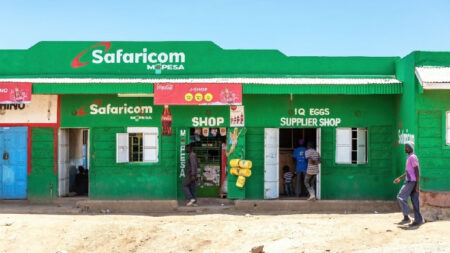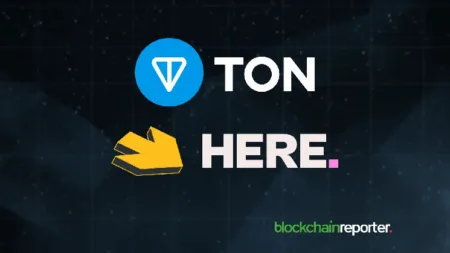Disclosure: The views and opinions expressed here belong solely to the author and do not represent the views and opinions of crypto.news’ editorial.
For years, web3 developers have struggled to make their systems scalable. When new technologies hit the scene, they typically launch in a monolithic fashion, where everything is included in a single stack. However, as these technologies mature, they become more specialized, and different companies hone various aspects of the stack in order to enhance scalability.
You might also like: It will take people, not tech, for modularity to succeed | Opinion
This is now happening with blockchains. Each layer in the stack is being optimized in a modular fashion, and web3 developers are adopting these modular solutions to reduce their costs and improve the efficiency and maintainability of their systems.
For instance, execution is increasingly being handled by L2s such as Arbitrum and Optimism, which allow for much higher throughput and lower fees than executing on Ethereum’s L1. Likewise, the data availability layer is being optimized by modular projects like Celestia and EigenDA.
As the web3 ecosystem matures, it becomes increasingly clear that the future lies in specialization and optimization at each layer of the stack. By allowing specialized teams to perfect different components of the stack, we can achieve levels of scalability and cost-efficiency that were simply not possible with monolithic designs.
ZK-rollups as the endgame for blockchain scalability
The journey to scalability really starts coming into focus when factoring in the rise of ZK-based technologies like zero-knowledge rollups.
ZK-rollups have emerged as the optimal scaling solution for blockchains because they use zero-knowledge proofs (ZKPs) to validate transactions without revealing sensitive information, but most importantly, they can also validate transactions faster and with minimal gas fees, provided they’re built with the right tools. zkVerify, a tool we’ve built for this exact purpose, is a perfect example of this.
With a ZK-rollup L2 chain, many transactions are batched together on the L2 and then sent to the L1 as a single transaction. This aggregated transaction also contains cryptographic proof, which can efficiently verify the entire batch.
ZKPs are expensive and computationally intensive
Right now, the biggest hindrance for ZK-systems is to efficiently verify and settle the ZKPs. “Proof verification” is an essential step that ensures a ZKP is cryptographically valid, and it is required for ZK-rollups to settle transactions on the L1.
Proof verification isn’t required for optimistic rollups because they rely on a different proof system called fraud proofs. All transactions are assumed to be valid by default, and to ensure security, there is a challenging period during which anyone can submit proof of fraud if they detect invalid transactions. However, the challenge period can last up to seven days, which slows down the finality of transactions. Despite this downside, optimistic rollups have become the most popular blockchain scaling solution today.
On the other hand, ZK-rollups submit the batched transaction along with state data to the underlying L1 for verification. The L1 verifies the proof onchain and updates the rollup’s state, ensuring all transactions are valid while providing immediate finality. This approach significantly increases transaction throughput and maintains stronger security guarantees without the need for a lengthy challenge period.
Modular ZKP verification is the solution
Thankfully, modularity can extend beyond the base layer. The same modular approach that has significantly improved L1 chains, like Ethereum, can also be applied to ZK-rollups.
How does this work in practice? Just like how Celestia handles data availability on a dedicated blockchain, a standalone chain can handle the proof verification process for ZK-rollups (and generally, for all systems relying on ZKPs), while still settling those batched transactions on the main L1 chain.
By outsourcing proof verification to a modular provider, ZK-rollups can just focus on execution and user experience. The proof verification chain operates in parallel with the ZK-rollup, while remaining an independent chain.
This approach reduces costs by more than 90% and makes them more stable over time. Instead of having a cost structure dependent on Ethereum (ETH) gas prices—which can be volatile and unpredictable—ZK-rollups can offload the proof verification to another layer without those fluctuations.
Furthermore, this modular proof verification layer can be updated beyond the current limits of Ethereum L1, which has certain constraints around what kinds of precompiles you can use. In layman’s terms, this means that a modular proof verification service can integrate the latest cryptographic innovations within a few weeks, while these updates might take years to be available on Ethereum.
Modular proof verification can be applied to other ZK technologies as well, including any dApp that relies on zero-knowledge proofs. This is the beauty of a modular solution—it can be harnessed in any system that needs it.
By standardizing the most expensive step in building systems that use ZKPs, all blockchains can benefit, moving us one step closer to a scalable and interoperable future.
So, what happens without modularity?
If we look at the projected growth of web3 over the coming years, the cost of proof verification for ZK-rollups is expected to skyrocket.
At Horizen Labs, we estimate that $47 million was spent on proof verification for ZK-rollups on Ethereum in 2023, and it is projected that the entire proof verification market will be worth $1.5 billion or more by 2028. By 2030, it’s been estimated that 90 billion proofs will be generated by decentralized applications alone.
The most expensive step in a ZK-rollup, proof verification, needs to be innovated, or else it will be extremely challenging for ZK technology to scale to a billion users. There is no reason for ZK-rollups and ZK-based applications to incur such an expense, and we shouldn’t place unnecessary demands on blockchains that hinder their development.
With modular proof verification, the cost of verifying a single proof can drop from around $20 (considering a Groth16 proving scheme, gas price at 30 gwei, and Ethereum price at $3000) to around $1.80. This massive cost savings will unlock new frontiers of innovation in web3, including new ZK-apps, Bitcoin ZK-rollups, proving systems, and more. Any ZK-based chain or application can benefit from offloading its proof verification to a modular solution.
As more zero-knowledge proofs are generated in web3, those proofs will also need to be verified. And as the entire web3 landscape becomes more modular, it only makes sense to apply that approach to ZKPs as well.
Read more: Modularity is transforming the crypto landscape | Opinion
Rob Viglione
Rob Viglione is the co-founder and CEO of Horizen Labs, the development studio behind several leading web3 projects, including zkVerify, Horizen, and ApeChain. Rob served in the US Air Force for several years and was deployed to Afghanistan, where he supported Special Operations Task Force intelligence efforts. During this time, he developed an early interest in Bitcoin, recognizing its potential benefits for countries with unstable economies. Rob is deeply interested in web3 scalability, blockchain efficiency, and zero-knowledge proofs. His work focuses on developing innovative solutions for zk-rollups to enhance scalability, create cost savings, and drive efficiency. He holds a PhD in finance, an MBA in finance and marketing, and a Bachelor’s degree in physics and applied mathematics. Rob currently serves on the Board of Directors for the Puerto Rico Blockchain Trade Association.
Read the full article here









